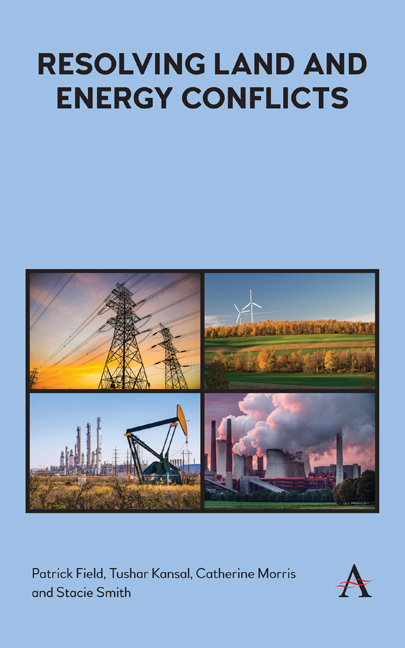Book contents
- Frontmatter
- Contents
- List of Illustrations
- About the Authors
- Acknowledgments
- 1 Introduction: The Complexity and Conflicts of Energy in the US Landscape
- 2 Land-Based Wind Energy Siting: The Not-So-Silent Wind
- 3 Nuclear Waste Siting: Getting Good People to Accept the Bad
- 4 Gas and Oil and Unconventional Shale: The New Old Frontier
- 5 The Linear Challenge: Transmission and Natural Gas Pipelines
- 6 Conclusions and Recommendations
- References
- Index
3 - Nuclear Waste Siting: Getting Good People to Accept the Bad
Published online by Cambridge University Press: 29 May 2019
- Frontmatter
- Contents
- List of Illustrations
- About the Authors
- Acknowledgments
- 1 Introduction: The Complexity and Conflicts of Energy in the US Landscape
- 2 Land-Based Wind Energy Siting: The Not-So-Silent Wind
- 3 Nuclear Waste Siting: Getting Good People to Accept the Bad
- 4 Gas and Oil and Unconventional Shale: The New Old Frontier
- 5 The Linear Challenge: Transmission and Natural Gas Pipelines
- 6 Conclusions and Recommendations
- References
- Index
Summary
Introduction
The history of US nuclear waste management has been long, complex and fraught with delays, broken commitments and political gamesmanship. Even though the first nuclear waste was produced in the 1940s, the United States still has no permanent solution to dispose of either spent nuclear fuel (SNF) from commercial nuclear reactors or the high-level waste from defense weapons and DOE-owned research facilities. In January 2012, the Blue Ribbon Commission on America's Nuclear Future (BRC) concluded that there is an “urgent” need for a new strategy to manage our country's high-level nuclear waste. The Blue Ribbon Commission recommended that the United States “commit to a new, more flexible and more adaptive approach to siting and developing [waste disposal] facilities in the future” and recommended the concept of “consentbased siting.” In January 2017, the US Department of Energy (DOE) released a draft proposal for how to implement consent-based siting.
In this chapter, we will review the scope of the nuclear waste problem, the current legislative and regulatory environment for managing our country's nuclear waste and the conflicts that need to be addressed to make progress on consent-based siting.
The inability to find a final repository for the vast build-up of nuclear waste in the United States can be attributed to a number of reasons:
(1) First, as with other energy facilities, siting can become difficult when state and local governments perceive a significant mismatch between the impacts and risks they would bear for hosting nuclear waste disposal sites.
(2) Second, disposal of nuclear waste presents unique challenges because it is a highly complex task, affecting not only those near the disposal facility, but also landowners, communities and businesses along the rail lines and highways that carry waste from the generating source to the storage or disposal facility. And arguably more so than other energy-related facilities, the disposal of nuclear waste will have consequences for thousands of years and will impact many future generations.
(3) Finally, the federal government's history of repeatedly missing timelines and commitments, as well as a perceived lack of fairness and transparency in the decision-making process, has undermined confidence in the agencies and decision makers tasked with designing and implementing current and future siting processes.
- Type
- Chapter
- Information
- Resolving Land and Energy Conflicts , pp. 39 - 60Publisher: Anthem PressPrint publication year: 2018



